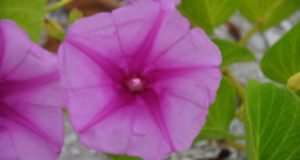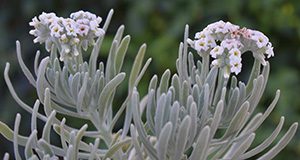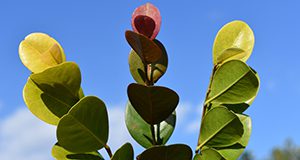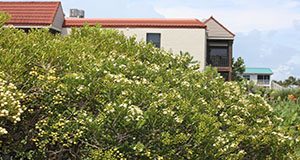Railroad vine is one of the most widely distributed beach plants in the world. The moving sand and salt spray make the beach environment a harsh one, and the plants that live there are specialized to colonize this environment. This new 7-page document, published by the UF/IFAS Environmental Horticulture Department, describes railroad vine’s leaves, flowers, fruit, planting and maintenance, and insect and disease problems. Written by Stephen H. Brown and Marc S. Frank.
https://edis.ifas.ufl.edu/ep587
Tag: Marc S. Frank
Sea Lavender (Heliotropium gnaphalodes L.): Identification and Uses
Sea lavender is a native plant found naturally along the Atlantic coast of central and south Florida. This 7-page document discusses this species’ identification and uses. Written by Stephen H. Brown, Marc S. Frank, and Andrew K. Koeser and published by the UF/IFAS Environmental Horticulture Department, August 2018.
http://edis.ifas.ufl.edu/ep563
Cocoplum (Chrysobalanus icaco L.) Identification and Uses
Cocoplum is one of two native Florida plants in the Chrysobalanaceae family, and is found in a variety of habitats. This 9-page document discusses the identification and uses of cocoplum. Written by Stephen H. Brown and Marc S. Frank and published by the UF/IFAS Environmental Horticulture Department, March 2018.
http://edis.ifas.ufl.edu/ep553
Joewood (Jacquinia keyensis): Identification and Uses
Jacquinia keyensis, known commonly as joewood, is listed as a threatened species by the state of Florida, and is most commonly found in the Florida Keys. This 8-page document discusses the identification and uses of joewood. Written by Stephen H. Brown, Marc S. Frank, and Andrew K. Koeser and published by the UF/IFAS Department of Environmental Horticulture, January 2018.
http://edis.ifas.ufl.edu/ep548
Biology and Management of Liverwort (Marchantia polymorpha) in Ornamental Crop Production
Liverwort is a common weed problem in production nurseries and greenhouses. This article has been written to help growers identify liverwort, understand its biology, and inform them of ways this weed can be managed in their operation. Written by Chris Marble, Marc S. Frank, Dail Laughinghouse, Shawn Steed, and Nathan Boyd, and published by UF’s Environmental Horticulture Department, September 2017.
http://edis.ifas.ufl.edu/ep542




